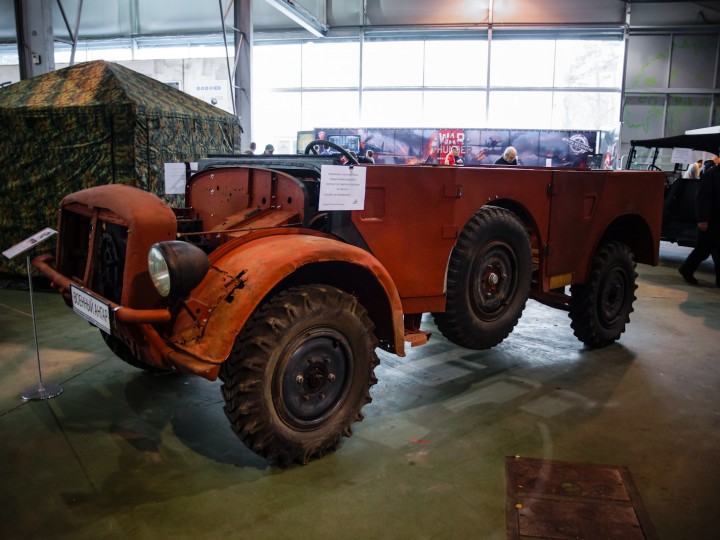1937 Horch 108 b
Considering a possible conflict of the automotive manufacturers’ interests the ground forces Weapons Command of Wehrmacht took on standardization of a car park for needs of the Army already in the middle of the 1930-ies. Thus three groups of army roadsters appeared: “Joint Light” ( a prominent representative Stoewer R200 or BMW 325), “Joint Middle” (Horch 901 and Opel mPI), and the crown became “Joint Heavy” (in short s.gl.Еinhеits-РКW, or a full name Schwerer Einheits Gelandegangiger Personenkraftwagen) represented by Horch 108 and Ford EG.
The rear motor chassis of the Horch-801 for an armored vehicle, introduced by the company Horch in 1935, provided the basis for the “Joint Heavy”, the figures in the name of which due to the front-engine layout were changed in inversed manner. In 1937 the first Horch 108 rolled from the production line of the plant in Zwickau. The automobile survived three modifications:
• Horch 108 a and Horch 108 b (were assembled in 1937-1938, the engine 3.5l 80hp, version b – without complete controllability)
• Horch 108 1a and 1b (1939-1940, the engine was upgraded from 3.5l up to 3.8l and the power was 10hp increased, and the mechanical brakes were substituted with innovative hydraulic brakes, the version 1b – without complete conrollability)
• Horch 108 Typ 40 (1940-1942, it was deprived of the complete controllability and side spare tires on the body outside in aid of the design cheapening)
Technical specifications. The crew is 10 people, the engine is 3,823 cm3 (3,517 cm3 with the previous а and b) petrol, 8 cylinders, 90hp (80hp with the previous а and b), the top speed is 84 km/h, fuel consumption is 32l per 100 km along a highway (42l off road), a driving model is 4х4, full controlled (version а and 1а), vehicle dimensions are 4,850 x 2,000 x 2,040, the weight is 3,950kg.







